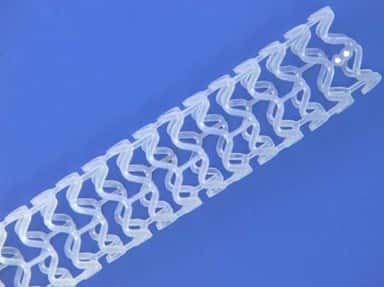
When people have serious heart disease and require balloon angioplasty, interventional cardiologists frequently insert a stent. This tiny mesh cylinder fits inside a blood vessel to keep it open. It sits there ever after, but sometimes there are adverse effects. How well does an absorbable stent do?
Problems with Stents:
Prior to stents, arteries would often clog again after angioplasty. Early stents were made of bare metal. But sometimes such stents can cause cellular overgrowth that leads to blockage within a year or less.
Drug-eluting stents became popular because the immune-suppressing medication that they give off helps reduce scarring and overgrowth. But these frequently require patients to take anti-clotting medications for long periods of time.
What Is an Absorbable Stent?
A new technology introduced in 2016 relies on a polymer scaffold that can be absorbed into the blood vessel wall. Cardiologists hoped that the absorbable stent would be as effective as metal stents but safer.
Sadly, a new report comparing the absorbable stent to a drug-eluting stent found that after two years there were significantly more cardiac complications among patients who received the Absorb stent. Almost eleven percent had experienced heart attacks, a need for repeat procedure or heart-related death. In comparison, about 8 percent of those who got the more conventional stent suffered such problems. Most of the difference was due to more heart attacks among patients with absorbable stents.
American College of Cardiology, Washington, DC. March, 2017

